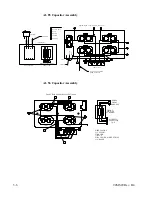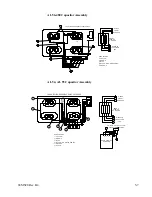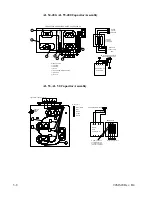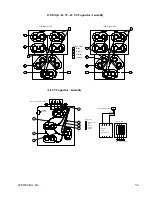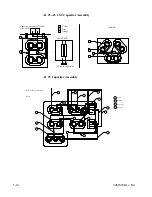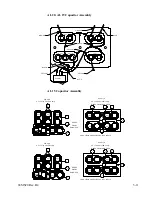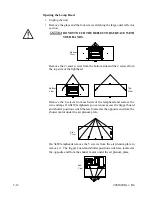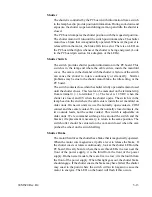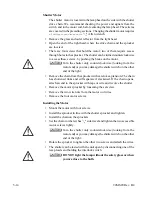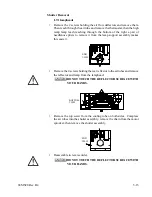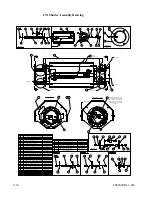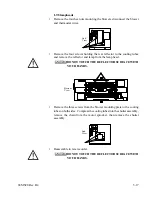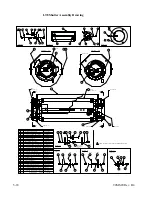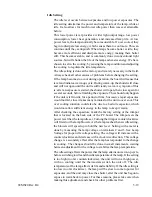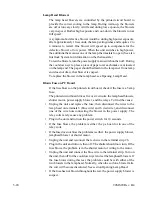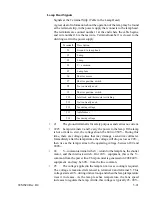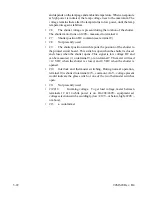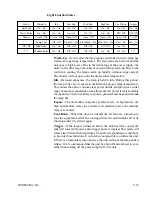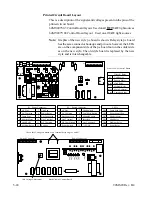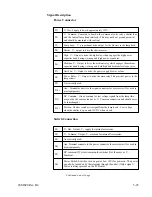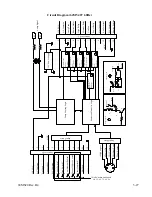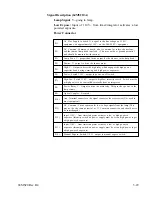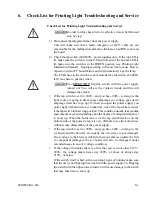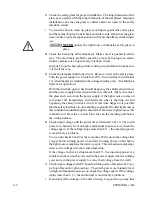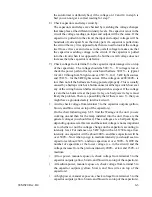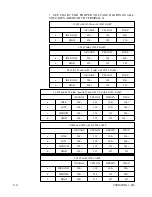
94MS20 Rev. B4
5-19
Idle Setting
The idle level occurs between exposures and low power exposures. The
idle setting determines the power and temperature of the lamp, while at
idle. It also allows for much lower idle power than was ever attainable
before.
This lower power level provides a wider light output range, low power
consumption, lower heat generation, and increased lamp life. At low
power levels, the lamps normally become unstable. If over cooled, they
begin to dissipate less energy, which causes them to cool more. This can
continue until they extinguish. When lamps become hotter at idle, they
become more efficient and dissipate more energy, making them hotter
still. This becomes stable, and is commonly done in conventional light
sources, but will shorten the life of the lamp and wastes energy. We have
chosen to servo the cooling, by sensing the lamp condition and adjusting
the cooling to regulate the idle temperature.
The idle setting is done at the factory and is rarely necessary in the field.
Always check all other causes of problems before changing the setting.
If the lamp becomes too cool during operation, the board will sense this
level and initiate a warm-up cycle. During warm-up, the shutter will close
and will not open until the unit is sufficiently warm. A symptom of this
is: after an exposure is started, the shutter will open, then close again for
several seconds, before finishing the exposure. This should only happen
if the unit is left in idle for a period of time. Successive rapid exposures
would not fail, since it takes many minutes for the unit to over cool. This
over cooling situation could also be due to a bad idle capacitor, which
would not allow sufficient energy to the lamp to keep it warm.
After checking the capacitors, mark the factory setting of the trimpot
that is located on the back side of the PC board. The trimpot sets the
power level that the lamp idles at. Turning the trimpot counterclockwise
will first slow the lamp blowers. As the lamp reaches the new idle setting,
the blowers will speed up to hold the new level. Setting with a meter is
done by measuring the lamp voltage on terminals 2 and 3. See Lamp
Voltage for proper idle voltage setting. The voltage will increase with a
counterclockwise and decrease with a clockwise direction. This voltage
change is a secondary effect after the lamp has responded to the change
in cooling. The changes should be done in small increments, waiting
between adjustment for the voltage to stabilize the lamp temperature.
The idle setting affects the power that the lamp attains on warm-up cycle,
before switching to idle and the idle temperature of the lamp. If the setting
is too high (too far counterclockwise), the unit will run at high power,
with no cooling until the thermostats switch the unit off. The idle
temperature of the lamp affects its life and reliability. If the idle setting is
too low (too far clockwise ), the lamp will be slow to come to power for
exposures, and the unit may close the shutter, after the unit has begun to
expose to warm back to power. For these reasons, please take care when
making this adjustment and check for other problems first.
Summary of Contents for OLITE
Page 1: ...94MS20 Rev B4 OLITE OLITE 60Hz Printing Light Service Manual O...
Page 8: ...1 2 94MS20 Rev B4...
Page 20: ...3 10 94MS20 Rev B4...
Page 56: ...5 30 94MS20 Rev B4...
Page 86: ...7 22 94MS20 Rev B5...
Page 108: ...9 20 94MS20 Rev B4...


